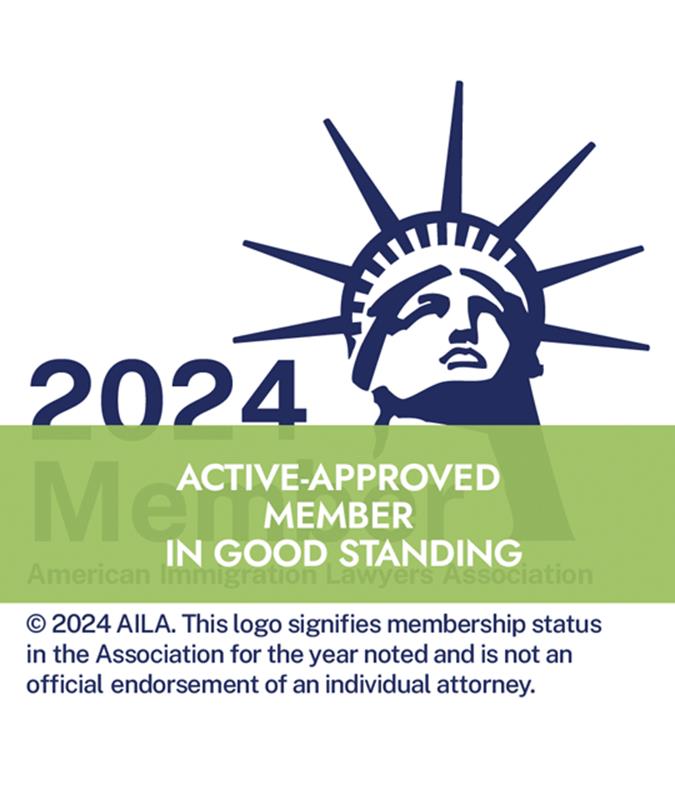Understanding the U.S. Student Visa Process
Many students from around the world desire to come to the United States. They do so not only with a desire to advance their English skills but also to earn degrees at some of our country’s most prestigious colleges and universities. They do this in hopes that it will give them an advantage as they launch or grow their careers in the increasingly globalized marketplace in which we live.
There are three types of student visas offered that prospective applicants can apply for, including the F, J, and M options. The F-1 is the most popular U.S. student visa option and one of many immigration services that our legal team helps with at The Immigration Law Offices of Neelam Bhardwaj in Greensboro, NC. So, we will take the time and review everything you need to know about how to apply for the visa. We’ll also address your potential for transitioning your F-1 student visa to an H-1B visa and associated green card via an employment arrangement.
What Are F-1 Student Visas?
As mentioned above, the F1 visa is the more popular travel document students pursue when planning to come to the U.S. This non immigrant visa allows an international student to enter the U.S. to study at institutions certified by the Student and Exchange Visitor Program (SEVP), a division of the U.S. Immigration and Customs Enforcement (ICE).
It’s important to note that an academic institution decides to admit a student to one of its programs. Once they do, it’s the student’s responsibility to apply for the F-1 student visa and provide proof of lawful entry into the U.S. to the SEVP-accredited school of higher education (the college or university a student plans to attend).
Qualifications for the F-1 Student Visa
There are pretty stringent criteria applicants must meet to qualify for the F-1 student visa aside from applying and getting into a SEVP program, submitting an application form for the travel permit, and showing proof of the award to a chosen school. Those additional requirements for the F-1 visa include:
- Enrolling as a full-time student at the SEVP-approved institution.
- Meeting English language proficiency score requirements established by the chosen SEVP school or enrollment in courses to improve fluency.
- Proving financial self-sufficiency to afford educational studies and living expenses while in the U.S.
- Having a valid passport with a validity date extends at least six months beyond the program completion date.
- Being able to show that you have a residence in your home country that you can return to after completing your degree.
How the F-1 Student Visa Process Works
Any prospective students interested in applying for the F1 visa must first be accepted into a SEVP-certified educational institution beforehand. Once accepted into an accredited school, applicants must:
- Obtain an I-20, which is officially known as a “Certificate of Eligibility for Nonimmigrant Student Status,” from the college or university.
- Pay the Student and Exchange Visitor Information System (SEVIS) fee. SEVIS is a U.S. Department of Homeland Security (DHS) administered online system that the federal agency utilizes to store data regarding SEVP-certified educational institutions.
- Complete form DS-160, or the “Online Nonimmigrant Visa Application,” which, according to the U.S. Department of State, can take around 90 minutes to complete.
- Schedule and attend the visa interview with your nearest U.S. consular officer abroad. You should do this as soon as possible, as wait times to schedule interviews are often several months.
The I-20 Certificate of Eligibility and the F-1 Visa Process
I-20 certificates should include the following key information on them, which your selected educational institution will complete based on the details you provided in your application to the university or college:
- The SEVIS ID number
- Your intended program of study
- Program start and end dates
- The cost of attendance for your school
- Your funding sources for school and living expenses while in the U.S.
One of the biggest mistakes that prospective international students make is not taking the time to verify that the information on their application, and thus transferred by the school to their I-20, is accurate. Another common pitfall student visa applicants make is failing to sign the bottom of the first page of the I-20.
Failing to sign this document or fixing any inaccuracies on an I-20 can take months to resolve, resulting in you not being granted entry to the U.S.
You must retain the I-20 once you secure it, as you will need to present it when entering the U.S., seeking employment, and taking care of other official business, such as applying for a driver’s license.
Note that an F-1 student visa generally lasts as long as your university documents that the program lasts on your I-20 form. You must obtain your degree by the expiration date on Form I-20, or you may have to leave the country without completing your program.
Costs Associated with Applying for an F-1 Student Visa
You can expect to pay approximately $510 in application and processing fees to the U.S. government for an F-1 visa. This fee includes:
- The DS-160 visa application fee: This costs $160, which you must submit via the online portal along with a Form I-20, passport, travel itinerary, and photographs for your travel permit. You will want to keep the printed confirmation containing the barcode after submitting your DS-160 online, as consular officials will likely request it when you attend your visa interview.
- SEVIS processing and maintenance fees: According to ICE, F-class student visa fees are currently $350. You will want to retain your SEVIS fee receipt, known as Form I-901, so you can present it at your visa interview when U.S. consular officials request it.
What to Expect at Your F-1 Student Visa Interview
With very few exceptions, all applicants must attend a visa interview in person. One exception is if the applicant is under 14 or over 80. Another is if you have already satisfied visa renewal requirements. Immigration officials allow the delivery of applications by courier in these select instances.
The goal of embassy or consulate staff members abroad in conducting a visa interview with you is to verify that you have a serious and legitimate purpose for visiting the U.S. They will not only ask you questions to verify that’s the case but also ask to see documentation substantiating your claims, with emphasis on the following:
- Proof of funds to come to, study, and reside in the U.S.
- Plans for returning home after you’ve completed your studies
Maintaining Eligibility for an F-1 Visa
Applicants often mistakenly perceive that once they secure an F-1 visa, nothing could result in its cancellation. That’s certainly not the case. You must comply with the terms and conditions of the visa program, including the ones described below, to maintain your F-1 status:
- Not enter the U.S. more than 30 days prior to your program’s start date
- Contact the designated school official (DSO) at your school to notify them of arrival in the U.S., at the university, and prior to the program start date listed on the I-20 form
- Enroll full-time in your academic program during each applicable academic term
- Adhere to the university code of conduct and other institutional requirements
- Attend classes and maintain good academic standing in your courses
- Discuss any potential drops or changes in classes or needs for extensions beyond dates listed in the I-20 with the school DSO
- Complete at least one full academic year and complete registration for the next academic term before taking any vacation or break from academic studies
Since there is a 60-day grace period for departing the U.S. after you have graduated or your I-20 expires, you will want to consider other options for extending your stay in the U.S. These may include:
- Pursuing a more advanced degree
- Transferring to a different school
- Occupational training or employment opportunities described below
Can You Work While in the U.S. on an F-1 Student Visa?
Working is not completely off limits if you are in the U.S. on an F-1 student visa; however, you must discuss your desires with your school’s DSO and secure their approval before pursuing employment if you wish to work:
- At an on-campus job during in-session periods throughout the academic term
- Potentially full-time during academic breaks
- Off-campus
Options You Can Pursue to Remain in the U.S. After Your F-1 Visa Expires
Many individuals who pursue academic studies in the U.S. wish to extend their time here. Those individuals wishing to remain here often consider:
Applying for Optional Practical Training
Optional Practical Training (OPT) is a temporary work permit for F-1 visa holders. This OPT allows recipients to continue living in the U.S. as they spend up to 12 months employed in a field related to their area of study. Special accommodations are made for science, technology, engineering, and math (STEM) graduates seeking Optional Practical Training, which may allow them to remain working in the U.S. for up to two years post-graduation.
Students who don’t apply for OPT or receive extensions for additional training must generally return to their home countries within 60 days of graduation.
Transitioning from OPT to Securing an H-1B Visa
Many graduates often have established professional connections in their field of study here in the U.S. and want to continue nourishing those relationships long after their OPT commitments have ended. Those individuals often apply for an H-1B non-immigrant “Specialty Occupations” visa to continue contributing to their field.
For-profit employers generally apply for an H-1B visa on an OPT immigrant’s behalf. Doing so often requires an employer to register with the U.S. Citizenship and Immigration Services (USCIS) and follow the process of “selection” to file.
The government agency enforces caps on the amount of H-class visas it awards to individuals working for for-profit companies each year, which is based on a “lottery” system, much like other United States visa programs. It can take multiple attempts for an applicant to get “selected” to file. It’s, therefore, extremely important for applicants working at for-profit companies to apply as early as possible in the OPT process.
There isn’t currently any cap on the number of H visas awarded to individuals working for nonprofit institutions of higher education, meaning employers can freely apply on their international workers’ behalf for the H-1B at any point during their tenure with them.
Applicants can expect a start date of 10/1 once approved for a transition between OPT and an H-1B visa.
How a U.S. Immigration Attorney Can Help You With Your Student Visa Needs
Applying for a student visa may seem easy to do if you look at the application forms online; however, don’t let appearances fool you. As hinted at earlier, a minor misstep can cause your application’s denial or, at the very least, lead to requests for additional information. These outcomes can significantly delay the processing of your visa application and even require you to start it all over again.
One of the greatest benefits of working with an immigration attorney like Neelam Bhardwaj is that she has personally handled countless visa applications during her nearly 30 years of practicing immigration law in Greensboro, North Carolina. She knows how applications need to be completed and the supporting evidence that’s necessary to achieve desired results.
Don’t take a chance on your future. Reach out to schedule an initial consultation with The Immigration Law Offices of Neelam Bhardwaj to discuss your interest in securing a U.S. student visa so we can discuss your eligibility for this travel permit. Should you qualify for a visa, we can assist you in applying for it, giving you the best chance of securing a desirable outcome.



